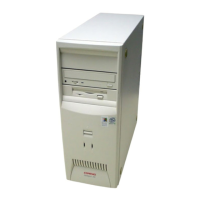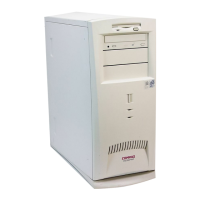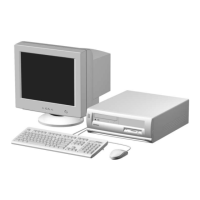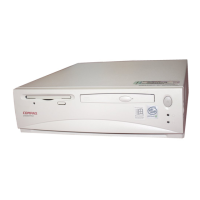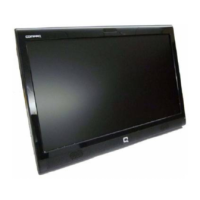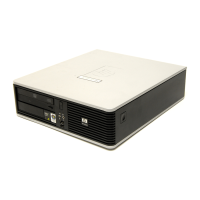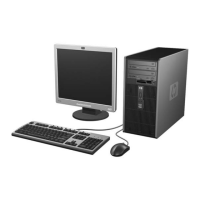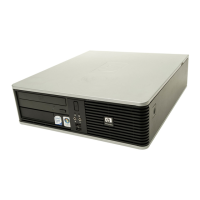WHITE PAPER (cont’d) Compaq Workstations - Key Technologies
- 21 -
• Optimized multiprocessing support: 1-2 Pentium II processors; 266MHz/512KB,
300MHz/512KB, 333MHz/512KB, or 333MHz/512KB (with ETR)
Typical workstation designs include dual processing capabilities with a single memory
controller and a single PCI bus. Under this design the processors must compete for
access to the critical subsystems such as memory and hard drives. By providing dual
memory controllers with dual peer PCI buses, data from the multiple processors has
double the access to critical subsystems, which significantly improves overall system
performance for the demanding applications in the target segments.
Processors
Q. What applications specifically can take advantage of the multiprocessor
capabilities of these products?
A. In general, applications in the DCC and CAE segments benefit most from the
multiprocessing capabilities of these workstations.
In the DCC segments, applications such as 3D Studio Max, Macromedia Director,
Adobe PhotoShop 4.0 and Illustrator and Net Objects Fusion include multiprocessing
functionality enabling them to more fully take advantage of the Compaq Highly Parallel
System Architecture which optimizes multiprocessing capabilities.
In the CAE segment, analysis applications such as those offered by ANSYS and MSC’s
NASTRAN use multiple processing capabilities.
Additionally, Compaq has announced its Multiprocessing (MP) Initiative through which
we are working with ISVs and Intel in various target market segments to help take full
advantage of the multiprocessing capabilities of our Professional Workstation product
line.
Q. How does the 333MHz product introduced in April 1998 differ from the 333MHz
product introduced in February 1998 for the Compaq Professional Workstation
6000 line?
A. Models introduced in April 1998 feature extended memory support (also known as ETR
RAM or ETR). This allows system cache to recognize up to 3-GB of memory, instead of
512-MB, in one interval, thus optimizing system performance. Models introduced in
February 1998 support only up to 512-MB of system memory.
Q. Can a user mix a non-ETR 333MHz Pentium II processor with a new ETR 333MHz
Pentium II processor?
A. A user can upgrade from a non-ETR to an ETR processor, but you cannot mix the two
different types because there would be no benefit to do that. Memory would remain at a
maximum of 512 MB. The system will display the message “System halted:
Incompatible CPU types” during boot-up and will halt operation.
Q. How can a user tell which 333MHz processor is in the Compaq Professional
Workstation 6000 unit?
A. ETR processors are physically marked with an Intel number “SL2S5” whereas non-ETR
processors are physically marked with “SL2KA”.
Also, during initialization or boot up, system will show which processor the unit has.
System will display message “Initialized Processor 0 – ETR” (for single processor
system) and “Initialized Processor 1 – ETR” (for the second processor).
.
.
.
.
.
.
.
.
.
.
.
.
.
.
.
.
.
.
.
.
.
.
.
.
.
.
.
.
.
.
.
.
.
.
.
.
.
.
.
.
.
.
.
.
.
.
.
.
.
.
.
.
.
.
.
.
.
.
.
.
.
.
.
.
.
.
.
.
.
.
.
.
.
.
.
.
.
.
.
.
.
.
.
.
.
.
.
.
.
.
.
.
.
.
.
.
.
.
.
.
.
.
.
.
.
.
.
.
.
.
.
.
.
.
.
.
.
.
.
.
.
.
.
.
.
.
.
.
.
.
.
.
.
.
.
.
.
.
.
.
.
.
.
.
.
.
.
.
.
.
.
.
.

